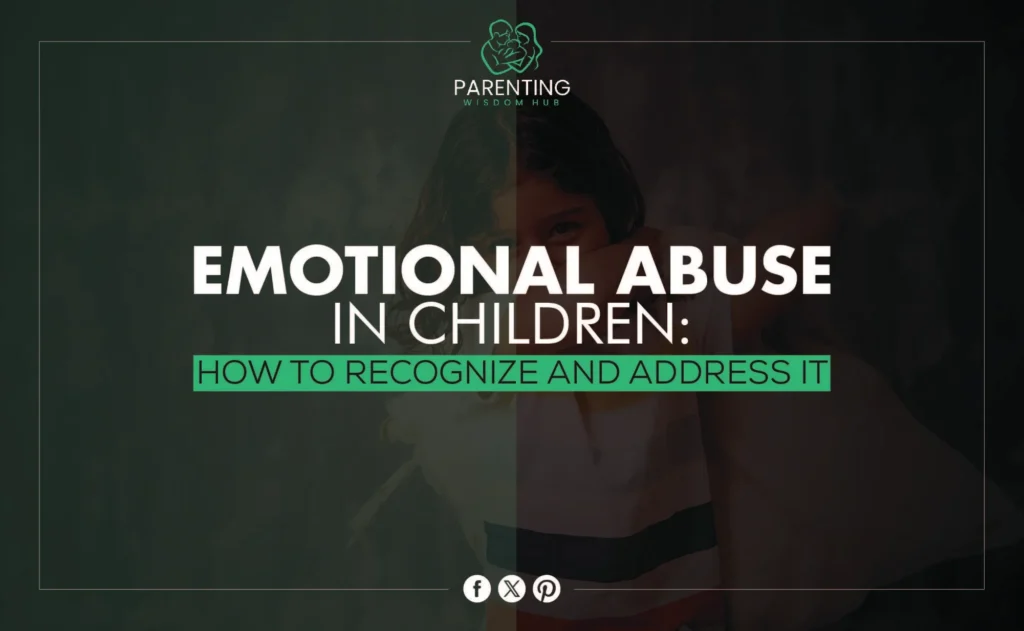Introduction
Children’s emotional abuse is a quiet epidemic that is sometimes overlooked. According to the American Academy of Pediatrics, 4.2 million child maltreatment cases are recorded annually in the US, with emotional abuse making up a large share. Despite its prevalence, emotional abuse is one of the most misunderstood and underrecognized forms of child abuse.
Parents, caregivers, and educators must understand emotional abuse since it can be as harmful as physical violence. It can impair a child’s growth, self-esteem, and mental health into adulthood. Emotional abuse is often hidden by behavioral and psychological symptoms, unlike physical violence. This makes it crucial for caregivers to be aware of emotional abuse indications.
This blog explains how to spot and treat emotional abuse in children. Understanding emotional abuse, its symptoms, and how to respond can help prevent children from long-term harm. With this understanding, you may build a safer, more helpful environment for children to grow up emotionally healthy.
What is Emotional Abuse in Children?
Child emotional abuse refers to a pattern of behavior by parents, caregivers, or others that harms a child’s emotional development and self-esteem. Emotional abuse sometimes leaves no visible scars but significantly affects the child’s mental and emotional health.
Emotional abuse is subtle and readily overlooked, unlike other forms of abuse. Without physical contact, its consequences can be just as harmful, if not more so. This type of abuse can happen at home, school, or online, and it’s hard to spot since it often involves typical or appropriate behaviors like discipline or criticism.
Types of Emotional Abuse
Verbal Abuse: This includes calling children names, yelling, and putting them down. Abuse of words can hurt a child’s sense of self-worth and confidence, which can last for a long time.
Rejection and Isolation: Rejecting or isolating a child might be considered emotional abuse. This could mean disregarding the child’s needs, excluding them from family activities, or withholding love and support. This can make the youngster feel unwanted and unloved.
Terrorizing and Threatening Behaviors: Terrorizing a youngster entails punishment or control through fear. This could involve threatening bodily damage, telling the child they are worthless or unloved, or making them think something bad will happen if they don’t cooperate.
Ignoring and Neglect: Another form of emotional abuse is ignoring a child’s needs. This may mean ignoring the child’s feelings, not comforting them, or neglecting their emotional needs. This might cause abandonment and emotional separation.
Overpressuring a Child: Extreme pressure or unrealistic expectations can also be emotional abuse. Pressure to perform well or harsh criticism for not achieving expectations can cause anxiety, tension, and a sense of failure in children. Overpressing a child might hinder self-esteem and confidence.
Recognizing and addressing emotional abuse requires understanding these forms. Parents, caregivers, and educators must be attentive and proactive in safeguarding children from all forms of abuse, which can have long-term impacts on a child’s emotional and psychological development.
Common Signs and Symptoms
Behavioral Signs
Changes in behavior can indicate emotional maltreatment in children. Children who are emotionally abused may show distressing behaviors.
- Withdrawal or Social Isolation: An emotionally traumatized child may choose to spend time alone rather than with friends or family. They may isolate and avoid activities they once enjoyed.
- Extreme Behaviors—Overly Aggressive or Overly Passive: Emotional abuse can cause severe conduct. Some youngsters may become angry and lash out, while others may become passive and compliant.
- Regression to Earlier Developmental Stages: Bedwetting and thumb-sucking may return in children. These regressions are commonly coping mechanisms for mental discomfort.
- Low Self-Esteem or Feelings of Worthlessness: A child’s self-esteem plummets after emotional maltreatment. They may feel useless, criticize themselves, or lack confidence.
Emotional Signs
Emotional abuse can have a major negative impact on a child’s mental health because it can show up in many ways.
- Anxiety, Depression, or Excessive Fearfulness: Emotional abuse can cause anxiety and despair in children. They may be exceedingly scared, especially near the abuser, and depressed or despairing.
- Difficulty Forming or Maintaining Relationships: A child’s capacity to create and sustain healthy connections may be hampered by emotional abuse. They may have trust issues, have trouble connecting, or shun close connections.
- Inability to Trust Others: Emotionally traumatized children may have trouble trusting others, especially supportive ones. Their distrust of classmates, teachers, and other adults can spread.
- Chronic Feelings of Shame or Guilt: Children who are emotionally abused often feel shame or guilt. They may feel terrible or deserving of maltreatment, causing significant emotional distress.
Physical Signs
Emotional abuse mostly affects the mind and feelings, but it can also show up in the body.
- Unexplained Physical Symptoms: Children may complain of stomachaches or headaches without a medical cause. These signs can show emotional distress physically.
- Sleep Disturbances or Nightmares: Emotionally traumatized children sometimes have trouble going to sleep, frequent awakening, or nightmares. Disorders are often caused by abuse-related anxiety and fear.
- Changes in Appetite or Weight: Changes in a child’s eating habits may result from emotional abuse. They may lose their appetite or overeat to cope with their emotions, causing weight gain or loss.
These symptoms are essential for recognizing child emotional abuse. Early detection and intervention can help children heal and develop in a healthy environment.
Long-term Impact of Emotional Abuse on Children
Psychological Effects
When kids are emotionally abused, the effects on their minds can be deep and last a long time.
- Increased Risk of Mental Health Disorders: Mental health illnesses like sadness, anxiety, and PTSD are more likely among emotionally abused children. Adults may struggle with these conditions, lowering their quality of life and functioning.
- Difficulty in Establishing Healthy Relationships: Psychologically damaged children may struggle to form healthy adult relationships. Emotional abuse can affect trust, intimacy, and communication. They may struggle to maintain deep friendships and love connections as adults because they feel unworthy.
Educational Impact
Not only does mental abuse hurt a child’s emotional health, but it can also have big effects on how well they do in school.
- Poor Academic Performance and Lack of Motivation: Children who are emotionally mistreated may fail academically. Abuse can induce tension and anxiety, making it hard to focus, finish tasks, and participate in class. Poor academic performance and lack of school motivation often ensue.
- School Absenteeism or Truancy: Emotional abuse can make school scary for kids. They may stop going to school, resulting in truancy. Feeling insecure or unsupported at home can make school seem burdensome or futile.
Social and Developmental Impact
Children who are emotionally abused may also have problems with their social development and their ability to hit developmental milestones.
- Social Withdrawal and Difficulty in Social Interactions: Children who are emotionally mistreated may withdraw from peers and adults. They may feel isolated and unable to socialize. Social disengagement can hamper social skill development, causing loneliness and isolation.
- Developmental Delays or Regressions: Children may have delays or regressions due to emotional maltreatment. They may fall behind or revert to bedwetting or thumb-sucking. These delays might hinder their growth and development, making it hard for them to catch up.
Emotional abuse affects children’s mental health, education, and social development over time. Preventing these long-term impacts and helping children heal and thrive in a supportive setting requires early emotional abuse intervention.
How to Recognize Emotional Abuse in Different Settings
In the Home
Emotional abuse can happen in the home, and it’s usually done by people who are close to the child.
- Signs of Emotional Abuse by Parents or Guardians: Parents’ criticism, ridicule, or rejection can be a cause. Parental emotional abusers may withhold affection, support, or approval to dominate their children. These unreasonable expectations can cause chronic emotions of inadequacy and worthlessness in children.
- Sibling-related Emotional Abuse: Sibling emotional abuse occurs when one sibling dominates or harms another by emotional manipulation, threats, or verbal attacks. If it consistently lowers the victim’s self-esteem and emotional well-being, this is abuse, not sibling rivalry.
In Schools
Schools are places where kids spend a lot of time, and they can also be places where mental abuse happens.
- Bullying and Peer-related Emotional Abuse: Abuse in schools often involves bullying. Name-calling, rumors, social exclusion, and other peer harassment are examples. Bullying can cause emotional discomfort and damage a child’s school safety and belonging.
- Teacher-student Emotional Abuse: Teachers and staff may purposefully or accidentally harm students emotionally. This includes public humiliation, severe criticism, and picking on a child. Such behavior might hurt a child’s self-esteem and academic and social development.
In Other Settings
Abuse of a child’s emotions can happen in places other than home and school, where they connect with adults and other kids.
- Emotional Abuse in Childcare or Extracurricular Activities: Children may be emotionally abused in childcare or extracurriculars. Using emotional manipulation, partiality, or neglect, caregivers, coaches, and instructors can influence or punish children. This can make children fear these activities and dread them.
- Abuse in Online Settings (Cyberbullying, Social Media Harassment): Cyberbullying and social media harassment have increased emotional abuse. Cyberbullying, public humiliation, and exclusion can cause mental pain in children. Internet anonymity and reach can make it harder for children to escape this abuse.
Protecting children requires recognizing it in diverse circumstances. Adults can intervene early and support children’s safety and emotional well-being by recognizing indications in the home, school, and other settings.
How to Address Emotional Abuse in Children
Immediate Steps to Take
It is very important to move quickly and carefully if you think a child is being emotionally abused.
- How to Respond if You Suspect a Child is Being Emotionally Abused: First, listen to the child without judgment. Please encourage them to speak up and ensure they feel heard. Avoid anger or disbelief, which can silence kids. Instead, soothe them and say their condition is not their fault.
- Importance of Creating a Safe Environment for the Child to Express Themselves: Safe and supportive environments are crucial. Make sure the child knows they may speak freely without fear. This safe area lets the youngster talk about their experiences and heal.
Reporting and Legal Considerations
As soon as you notice signs of mental abuse, you should get the child legal help to protect them.
- How to Report Emotional Abuse to the Authorities: Report abuse to child protective services or law enforcement. Please include specific occurrences, dates, and evidence to support your concerns. Reporting abuse protects children and prevents further harm.
- Legal Protections and Rights for Children: Children who are emotionally abused have legal protections. These rules differ by jurisdiction but typically guarantee the right to safety and care. Understanding these legal laws helps protect the child’s rights throughout the process.
Therapeutic Interventions
Therapy is an important part of helping kids who have been emotionally abused get better.
- The Role of Counseling and Therapy in Helping a Child Recover: Counseling and therapy help kids handle their emotions safely. Therapists can help abused children cope, regain self-esteem, and address psychological issues. Structured therapy helps children recover from trauma.
- How to Find and Choose the Right Therapist: Kids require the right therapist. Seek emotional abuse-experienced child psychologists. Trust between the child and therapist is essential for therapy. Parents and caregivers can find therapists through trusted sources and healthcare providers.
Parental and Caregiver Support
Parents and other adults who care for a child who has been emotionally abused need to keep giving them care and attention.
- How Parents and Caregivers Can Support a Child Who Has Experienced It: Healing depends on parents and caregivers. Maintaining love, support, and encouragement is vital. Positive reinforcement increases a child’s self-esteem and confidence. Keep in touch with kids to support and listen.
- The Importance of Self-care for Parents and Caregivers: Caring for an emotionally abused child is hard. Parents and caregivers should prioritize self-care to avoid burnout. Counseling, support groups, and mental health activities may help. Parents and caregivers can cure children by self-care.
It involves prompt action, legal intervention, therapeutic support, and continuous parental and caregiver care. These strategies can help youngsters recover from their experiences and become healthy, resilient people.
Prevention Strategies
Tips for Fostering a Supportive and Nurturing Environment: Parents can promote optimism by loving unconditionally, setting boundaries, and communicating. Praising youngsters helps them develop self-esteem and resilience. Routines and listening to children can also establish a safe and caring environment.
Effective Communication Strategies to Prevent Emotional Harm: Communicate well to avoid emotional injury. Parental active listening means not interrupting children. Positive communication, no criticism, and calm problem-solving prevent misunderstandings and emotional conflict. When youngsters express and affirm their emotions, family trust and understanding increase.
Importance of Educating Parents, Teachers, and Caregivers About Emotional Abuse: Educating child caretakers about emotional mistreatment is crucial. Awareness programs can help these people spot indicators of abuse early and stop it. Understanding the long-term effects of emotional maltreatment can inspire people to be more loving.
Role of Schools and Communities in Preventing Emotional Abuse: Schools and communities can spot and stop emotional abuse. Schools can build safe, supportive settings for children by promoting respect and inclusivity. Positive social connections and family resources in community programs can prevent abuse.
How to Create Supportive Networks for Children
Bringing kids, parents, educators, and community members together fosters support. Through mentoring, peer support, and after-school activities, kids can find role models and safe spaces to express themselves. Ban bullying and train staff to spot and address emotional abuse in schools. All students benefit emotionally from school-community relationships.
Families, educators, and the community must work together to prevent emotional maltreatment. Positive parenting, mindfulness, and supporting networks can shield children from emotional injury and help them grow into confident, emotionally healthy adults.
Resources for Further Help and Support
Hotlines and Helplines
You must seek treatment quickly if you suspect emotional abuse of a youngster. Abuse hotlines and helplines offer advice on how to proceed.
- Childhelp National Child Abuse Hotline (1-800-4-A-CHILD): This 24-hour helpline for child safety concerns offers support in over 170 languages. Trained counselors offer crisis intervention, information, and emergency, social, and support services recommendations.
- National Domestic Violence Hotline (1-800-799-SAFE): Although focused on domestic violence, this hotline also helps youngsters exposed to emotional abuse at home.
- The Trevor Project (1-866-488-7386): This hotline is for LGBTQ+ youth experiencing emotional abuse or other difficulties. It provides 24/7 counseling and support.
Support Organizations
Several organizations help emotionally abused children and families.
- National Children’s Alliance: This organization operates US-wide Children’s Advocacy Centers (CACs). Abused children receive integrated treatment, including mental health counseling, at these clinics.
- Prevent Child Abuse America: This group provides resources, advocacy, and support to prevent child abuse and neglect and strengthen families.
- The American Professional Society on the Abuse of Children (APSAC): Professional development and assistance for abused child workers are provided by APSAC. Their resources and guidance help families suffering from emotional abuse.
Online Resources:
Child Welfare Information Gateway (www.childwelfare.gov): The government-sponsored site provides substantial resources on child abuse, including emotional abuse, for professionals, parents, and caregivers.
The National Child Traumatic Stress Network (www.nctsn.org): This site discusses trauma and abuse on children and offers therapy and recovery resources.
StopBullying.gov (www.stopbullying.gov): This website provides resources to prevent and address bullying, a widespread type of emotional abuse in schools and online.
Conclusion
Emotional abuse is widespread and can harm children’s psychological, social, and emotional development. Protecting children requires recognizing emotional abuse, understanding its long-term effects, and knowing how to address and prevent it. Positive parenting, awareness, and resource use can provide a safer, more supportive environment for children to grow and thrive.
Take immediate action if you suspect emotional abuse in a youngster. Contact hotlines, support groups, and other resources to help the youngster. We can create a future where every child is loved and safe.


